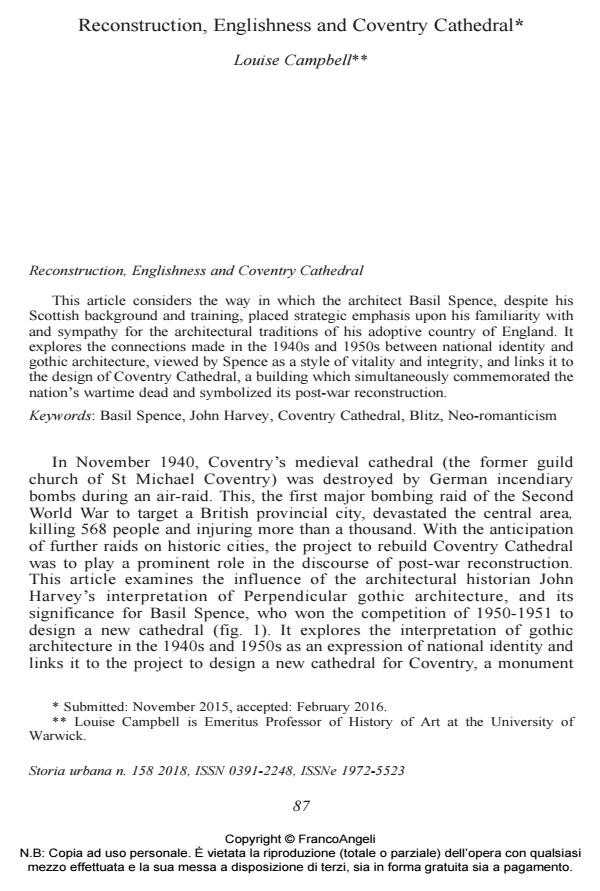Reconstruction, Englishness and Coventry Cathedral
Titolo Rivista STORIA URBANA
Autori/Curatori Louise Campbell
Anno di pubblicazione 2018 Fascicolo 2018/158
Lingua Inglese Numero pagine 23 P. 87-109 Dimensione file 553 KB
DOI 10.3280/SU2018-158005
Il DOI è il codice a barre della proprietà intellettuale: per saperne di più
clicca qui
Qui sotto puoi vedere in anteprima la prima pagina di questo articolo.
Se questo articolo ti interessa, lo puoi acquistare (e scaricare in formato pdf) seguendo le facili indicazioni per acquistare il download credit. Acquista Download Credits per scaricare questo Articolo in formato PDF

FrancoAngeli è membro della Publishers International Linking Association, Inc (PILA)associazione indipendente e non profit per facilitare (attraverso i servizi tecnologici implementati da CrossRef.org) l’accesso degli studiosi ai contenuti digitali nelle pubblicazioni professionali e scientifiche
This article considers the way in which the architect Basil Spence, despite his Scottish background and training, placed strategic emphasis upon his familiarity with and sympathy for the architectural traditions of his adoptive country of England. It explores the connections made in the 1940s and 1950s between national identity and gothic architecture, viewed by Spence as a style of vitality and integrity, and links it to the design of Coventry Cathedral, a building which simultaneously commemorated the nation’s wartime dead and symbolized its post-war reconstruction.
Parole chiave:Basil Spence, John Harvey, Coventry Cathedral, Blitz, Neo-romanticism
- Translating Change: A Continuity of Craft Heritage at Coventry Cathedral, UK Johnathan Djabarouti, in Journal of Heritage Management /2022 pp.167
DOI: 10.1177/24559296221116974 - Relics of War: Damaged Structures and Their Replacement or Management in Modern Landscapes Peter J. Larkham, David Adams, in Sustainability /2022 pp.13513
DOI: 10.3390/su142013513
Louise Campbell, Reconstruction, Englishness and Coventry Cathedral in "STORIA URBANA " 158/2018, pp 87-109, DOI: 10.3280/SU2018-158005